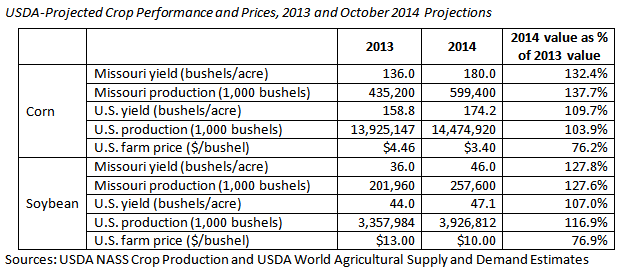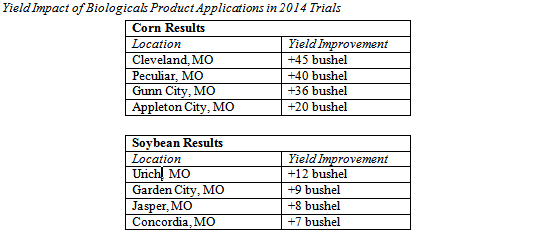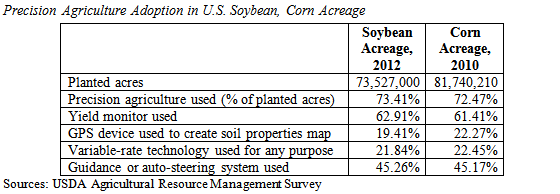Hi, and welcome to the MOF2 member newsletter. I first want to take an opportunity in this inaugural newsletter to thank you for participating in MOF2 as a member. As an organization, MOF2 exists to produce and deliver identity-preserved, traceable and value-added crops in ways that increase profits for our producer-members and our customers. We do this by identifying our customers’ product needs; matching input seed stock with premium growing environments; and managing the identity-preserved product during planting, growing, harvest, storage, transportation, processing and distribution.
Providing these products and services creates a real opportunity for our group to influence the U.S. food and feed system and position our producer-members’ crops as some of the finest available to our buyer and end-users.
Quarterly throughout the year, you’ll receive an edition of this MOF2 member newsletter. In it, we have a goal to share MOF2-related news and other content that updates you about relevant trends and changes occurring in the agriculture industry. It’s our hope that you and your fellow MOF2 members will enjoy staying updated with MOF2 and learning about information that affects your operation. Sharing such content will allow our members to better serve our buyers and accomplish the mission that guides our group.
We also appreciate hearing from you! If you have ideas for stories that you’d like to see featured in our MOF2 newsletter, then please contact me at 816-773-6018 or johno@agteampro.com, and we’ll work on incorporating your ideas into upcoming newsletter editions.
Sincerely,
John Ortiz, General Manager
Data Analysis
Agricultural producers experienced a starkly different crop production environment in 2014 than in the previous year. During harvest, USDA shares monthly crop production estimates that project total crop output, and the agency’s World Agricultural Supply and Demand Estimates Report projects crop production’s corresponding influence on market price forecasts.
Based on the Oct. 10 crop production and price estimates report, USDA projected rising crop yields. For corn, Missouri yields totaled 136 bushels per acre, but they jumped to an estimated 180 bushels per acre in 2014. In 2014, corn yields in Missouri will exceed the U.S. average yield estimate, which was 174.2 bushels per acre in the October report.
For soybeans, Missouri yields will increase an estimated 10 bushels per acre in 2014 relative to 2013. Despite increasing substantially from the previous year, Missouri estimated soybean yield in 2014 lagged the U.S. average estimate by 1.1 bushels per acre.
Higher production estimates have contributed to projected declines in crop prices relative to those from 2013. USDA projects that 2014 corn and soybean farm prices will represent just 76.2 percent and 76.9 percent, respectively, of average estimated prices from 2013. The following table shares more highlights from the October reports that USDA released.

Product Profile
For the upcoming year, MOF2 members will have a relatively new crop input to consider: BP-FA biologicals. Made of a soil-borne microbe blend, BP-FA aids plants in promoting their health and capturing their full productive potential.
The product takes a polymicrobial approach to improving soil and plant health. Some biologicals introduce just a few microorganism strains; however, BP-FA combines 10 bacterial strains to improve the odds that the bacteria achieve results in varied soils and growing conditions. A biologicals product that delivers only one or two strains may have poor efficacy if a limiting condition – such as soil pH level or texture – constrains their effectiveness.
To identify and obtain microbials needed for biologicals products, the BP-FA product developers screened and isolated soil bacteria. Then, they selected 10 bacterial strains that work well in tandem and blended those into a comprehensive product.
Each strain has its own respective roles and functions. In aggregate, the bacteria in BP-FA control diseases including phythium, rhizoctonia and phytophtora; protect plants from pests like nematodes; break down organic matter; promote growth; improve plant rooting; and produce enzymes that convert nutrients into forms that the plant can absorb. As an example, they produce phosphorylase that releases phosphorus from being bound in the soil.
BP-FA is often combined with a cold-pressed sweetener, which adds a food source for the bacteria and controls insects as they consume the sweetener but can’t digest it. The product’s commonly applied in furrow at planting, as a liquid coating on dry broadcast fertilizer or via foliar application. Overall benefits realized by using BP-FA include better fertilizer use efficiency, a possible reduction in the chemical load applied to a field, improved nutrient utilization and a stronger systems approach to maximizing plant health.
Trial data support that biologicals improve output potential for crops. The following table presents yield data from four corn plots and four soybean plots during 2014. With the biologicals application, corn yields improved 35.25 bushels per acre on average, and soybean yields increased 9 bushels per acre on average.

To learn more about BP-FA products and options for adding them to your crop protection program, please contact John Ortiz at 816-773-6018 or johno@agteampro.com. You can also review BP-FA product details and informational videos at www.bigyield.us.
Grant Project Announcement
In 2014, USDA Rural Development announced that MOF2 had received grant funding to study domestic market opportunities for non-GMO and organic soybeans. Funded by the USDA Value-Added Producer Grant Program, the project intends to explore opportunities that MOF2 may have in expanding its identity-preserved soybean business to serve U.S. buyers seeking value-added products with the non-GMO and organic attributes.
From a non-GMO perspective, several factors motivated MOF2 interest in the topic. Since 2010, GMO’s share of soybean production has dropped four percentage points, based on USDA NASS data, which may be attributed to producer, food industry and consumer trends. For producers, GMO seed is more expensive; lately, GMO traits have had reduced efficacy; and non-GMO and GMO soybeans yield similarly. These factors and premiums available create non-GMO interest at the producer level.
At the consumer level, consumers have grown more wary of GMOs. The share of consumers concerned about GMOs increased from 20 percent in 2002 to more than 50 percent 10 years later, based on research from The NPD Group. Such perceptions may be fueling food industry changes in ingredient sourcing. For example, mainstream brands like Cheerios and Grape-Nuts Original have transitioned to be GMO-free.
The feed industry is also seeing non-GMO demand spikes. Clarkson Grain identified animal feed as a future demand driver for non-GMO feed. Poultry and egg producers are notable market segments that have been interested in non-GMO feed. Preliminary research suggests that U.S. non-GMO crop supplies are limited.
As the research for this project begins and further evaluates non-GMO and organic market opportunities, look for updates about the project and potential that MOF2 has to respond to viable opportunities in upcoming editions of this newsletter.
Community Relations/Philanthropy
MOF2 has adopted Missouri FFA as an opportunity support the rural communities where our members live and the future participants in Missouri agriculture. Already, several events have provided FFA members with an opportunity to gain real-world skills.
On Sept. 6, 2014, teams from eight FFA chapters gathered at The Farm Research Center in Garden City, Mo., for a contest that involved estimating yield in corn and soybean plots. To make their calculations, the students used university-recommended methods for counting corn kernels per ear and pods per soybean plant. The contest also emphasized opportunities that students may have to engage in agriculture as they continue their education and start their careers. FFA chapters from Adrian, Appleton City, Cass Career Center, Cass Midway, Cole Camp, Holden, Montrose and Rich Hill participated in the contest.
On Dec. 4, 2014, the FFA teams received recognition for their contest involvement. They also had an opportunity to meet and hear from Missouri FFA director Leon Busdieker and executive secretary Keith Dietzschold.
News in Review
In each quarterly newsletter, look for a “News in Review” summary that explores and analyzes a recent agriculture-related news item.
Increasingly, U.S. producers have adopted new technologies to improve their efficiency, record keeping and decision-making capabilities. In December 2014, USDA issued updated data that quantified the number of producers using precision agriculture technologies in their given crop production systems. The following table shares precision agriculture adoption rates based on U.S. soybean and corn acreage.
For the technology categories reported, soybean and corn acreage have had precision agriculture technologies adopted at similar rates. In 2012, 73.41 percent of U.S. soybean planted acreage had used precision agriculture. Yield monitoring technologies and guidance or auto-steering systems were the most popular technologies used. Adoption was less significant for GPS devices that create soil properties maps and variable-rate technologies.
Of the U.S. planted corn acreage in 2010, 72.47 percent had used precision agriculture. Like in soybean, yield monitoring and guidance or auto-steering systems were used on a greater share of planted corn acreage than GPS devices used to create soil properties maps and variable-rate technologies. Because the corn data reflect technology adoption in 2010 and the soybean data reflect technology adoption in 2012, however, comparing the two datasets and identifying technology use differences between the two crops are more challenging.

Many crop producers have welcomed technologies that collect their information and maintain the data for later reference. Access to the data wouldn’t be limited to the producers themselves, however. Agribusinesses or other entities could analyze the data and use data points to send marketing-related messages or otherwise target producers based on the data collected.
 BigYield High Yield Soybeans, High Yield Corn, and High Yield Wheat
BigYield High Yield Soybeans, High Yield Corn, and High Yield Wheat



